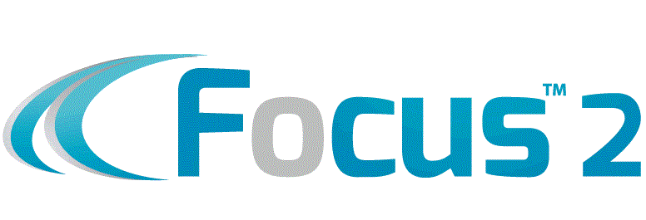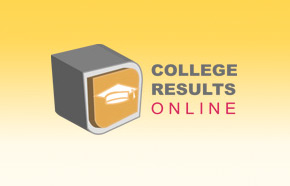Is the College Debt Bubble Ready to Explode?
by Laura Rowley
Friday, December 3, 2010
Kelli Space, 23, graduated from Northeastern University in 2009 with a bachelor's in sociology — and a whopping $200,000 in student loan debt. Space, who lives with her parents and works full-time, put up a Web site called TwoHundredThou.com soliciting donations to help meet her debt obligation, which is $891 a month. That number jumps to $1,600 next November.
In creating the site, Space, of course is hoping to ease her financial burden, but it's "mainly to inform others on the dangers of how quickly student loans add up," she said. So far she's raised $6,671.56, according to her site.
Space is just one example — albeit an extreme one — of a student loan bubble that may be about to burst. Over the last decade, private lenders, abetted by college financial aid offices, eagerly handed young people hundreds of thousands of dollars to earn bachelor's degrees. As a result of easy credit, declining grants and soaring tuitions, more than two-thirds of students graduated with debt in 2008 — up from 45 percent in 1993. The average debt load is $24,000, according to the Project on Student Debt.
In some respects, the student loan crisis looks remarkably like the subprime mortgage crisis. First, outstanding student loan debt has ballooned: It grew roughly four-fold in the last decade to $833 billion as of June — surpassing outstanding credit-card debt for the first time.
Secondly, defaults have soared amid a difficult job market. In 2008, the most recent year for which data are available, nearly 3.4 million borrowers began repayment, and more than 238,000 defaulted on their loans. The number of loans that went into forbearance or deferment (when borrowers receive temporary relief from payments) rose to 22 percent in 2007, from 10 percent a decade earlier, according to The Chronicle of Higher Education. Over a 15-year period, default rates range from 20 percent for federal loans to 40 percent on loans to students who attend for-profit schools, The Chronicle found.
Just as lenders offered easy no-money-down mortgages to unqualified borrowers during the housing boom, private student loan firms offered instant online approval for up to 100 percent of college costs to students, in some cases for four consecutive years. In early 2007, half of loans made by Sallie Mae, one of the industry's biggest players, were to students with no co-signers, according to Mark Kantrowitz, founder of informational Web site finaid.org.
As tuition costs have outpaced the caps on federal loans, more families have turned to private loans, which carry higher interest rates and stricter repayment rules. Last year private lenders supplied about $10 billion in loans (compared with $100 billion in federal loans). A study by the College Board found about a third of graduates in 2007-2008 had private loans. About two dozen private lenders offer student loans, and their business is growing at 25 percent annually, after a temporary decline amid the recent credit crisis, according to finaid.org.
Space, for instance, took out $12,000 in federal loans and borrowed $189,000 from private lender Sallie Mae. In an email interview, Space said she spent the money on tuition and room and board for four years; two summer semesters; a three-month study abroad program in Ireland; and books for three semesters. Some $20,000 of her debt is accrued interest. (Interest rates on her loans range from 3 percent to 9 percent.)
Space worked throughout high school and college at restaurants, retail stores and a nonprofit firm. But her savings dissipated quickly at Northeastern, where annual costs are $49,452. She's now looking for a second, part-time job. (Northeastern officials did not respond to an interview request.)
You'd think would-be borrowers would understand the impact of borrowing that much for college, but Space says that's not the case. "I think it is essential for young people to have someone sit down and explain how [loans] affect your credit, how much the debt will be with interest, and how this will truly change life later on. Many people say loaded things, like, 'go to the best school you can get into,' or 'student loans are considered good debt.' Solely following this advice led me to the place I'm at today," she said in an email.
A Sallie Mae spokeswoman said she couldn't comment on Space's situation, but called that level of borrowing "extremely rare." Sallie Mae requires its private student loans to be certified by the school's financial aid office to ensure that the amount borrowed is no more than the cost of attendance, less any other financial aid received. She added that Sallie Mae reviews the applicant's and co-signer's financial situation before approving a loan.
But Kantrowitz says Sallie Mae forked over a shocking amount of money. "To borrow $50,000 in the first year of college is already excessive. But where was the (lending) rationality in the second year when the student was borrowing another $50,000?" says Kantrowitz, adding that students who must borrow more than $10,000 a year for an undergraduate education should find a cheaper school, or start at community college.
Zac Bissonnette, a senior at the University of Massachusetts and author of the new book "Debt-Free U: How I Paid for an Outstanding College Education Without Loans, Scholarships or Mooching Off My Parents," agrees that there's plenty of blame to go around.
"It's profoundly stupid, but at the same time it takes a village to screw up that bad," he says. "I support the personal responsibility argument, but if you're 18 and the first person in your family to go to college, how can people absolve the college or the lender of responsibility?"
While the housing collapse's impact was wide-ranging — wreaking havoc on a multitude of industries and market participants — the primary losers in this debacle are the borrowers. Lenders can't repossess a college degree, and changes to the bankruptcy law in 1984 and 2005 mean borrowers can't charge off their obligations the way they can shed credit-card, mortgage or even gambling debt when they file for bankruptcy. (Just 29 of the 72,000 borrowers in bankruptcy in 2008 were able to prove "undue hardship" and have their student loans discharged, according to Kantrowitz.)
On the upside, federal student loans carry some consumer protections: lower interest rates; payment forbearance or deferment in the event of unemployment; income-based repayment programs; and forgiveness programs for public service careers. But the government will garnish the wages, income tax refunds and social security and disability checks of defaulters. Private loan terms are more treacherous, with fewer options for payment deferral, and fees and penalties for missing payments. Lenders can also get a court order to garnish wages. For its part, Sallie Mae says it has set up customized workouts for thousands of financially distressed customers.
"With this kind of debt on your credit record, you won't be able to get a car loan or a mortgage, and you'll have difficulty renting an apartment," says Kantrowitz. Some borrowers have lost jobs because the collection agencies called them at work illegally. Indebted grads are also less likely to go to graduate school, and delay getting married, having children and saving for retirement.
Kantrowitz says he doesn't think the student loan industry will implode, but its "cascading effect" on household finances and the U.S. economy will become noticeable by the year 2020. That's why he and educators, as well as some lenders, support legislation to reform bankruptcy laws.
In April, the Private Student Loan Bankruptcy Fairness Act of 2010 was introduced in the House of Representatives and The Fairness for Struggling Students Act was introduced in the Senate. Both would modify the bankruptcy law to allow certain educational debts to be eliminated. (Borrowers would still be on the hook for federal loans, which are funded by taxpayer dollars.)
"There are some people who go to school and live a very high lifestyle and graduate with a lot of debt, who could potentially attempt to get the debt discharged right after they get a job," says Kantrowitz. "But the bankruptcy code has enough anti-abuse provisions, and judges have enough discretion, that they could prevent someone from doing that."
The upshot would likely be tighter borrowing standards and higher interest rates to reflect the additional risk, making loans less accessible to low-income households.
Meanwhile, securitization of student loans throws a twist into potential legislation. In May, Standard & Poor's came out with a report suggesting that restoring bankruptcy protection would have a negative impact on the private loan asset-backed securities market, although it called the magnitude of the impact "uncertain."
Kantrowitz, however, says the effect would be minimal: "In aggregate, we're talking about $1 billion a year — but relative to all the lending that goes on, it's not that much."
As for Space, she says she is determined to pay off her debt and regrets the path she took to get her degree: "Everyone from Barack Obama to Bill Gates keeps pushing a college education as the way to secure one's economic future. That is a view that should be heavily qualified."
original post here





